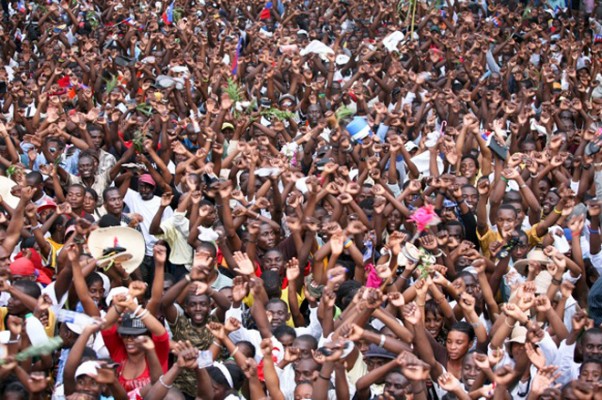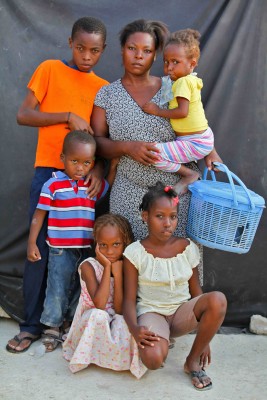Review: “Haiti, After the Earthquake: Photographs by Julie Dermansky”

Julie Dermansky, Day of Prayer, 2010. Archival print. Courtesy the artist and the Ogden Museum of Southern Art, New Orleans. ©Julie Dermansky.
“Haiti, After the Earthquake: Photographs by Julie Dermansky”
Ogden Museum of Southern Art
925 Camp Street
April 21–July 24, 2011
After the 7.0 earthquake struck Haiti in January of 2010, photographer Julie Dermansky traveled to the island nation in search of a missing friend. Upon arrival, she discovered that her friend was among the hundreds of thousands killed.* She eventually met two New Orleanians working on the recovery effort: Marie-Jose Poux and Dr. Yvens Laborde. The two, both Haitian-born, became her main subjects and guides during her second of three trips to the island as she unearthed the depths of both disaster and perseverance.
In conversation with Dermansky, she distinguishes herself from the photojournalists who drop in to “spray” disaster locations—capturing the devastation in as wide a scope as possible. Dermansky felt no sense of urgency to expose en masse, but rather crafted each shot with the patience of a sculptor. Her images, nonetheless, vacillate from macro to micro, from sweeping scenes of tent cities and annihilated buildings to earnest and powerful portraits. In Day of Prayer, shot in Port-au-Prince during Haiti’s National Day of Prayer, a sea of blurred faces and raised fists is dotted with the occasional lucid grin.
The most compelling acts of witness in the Ogden exhibition are the portraits, including those of Poux and Laborde, as well as the Voodoo priest George Raul. The way Dermansky focuses on her subjects, particularly the anonymous children photographed in orphanages, cholera clinics, and tent cities, somehow delivers them agency, momentarily transforming each into the most important person in the room with the loudest voice to tell a story.
Countering the external chaos that pervaded, Dermansky shaped her photographs to highlight the subjects’ quiet, controlled interiority. Particularly notable are Girl with Doll and Family in Tent City, derived from a series of shots showing survivors with an item they saved from the devastation. The little girl clutches a dirty doll with matted hair, and in the other, the matriarch of a family poses with her children, holding a blue basket she saved in which to keep her family’s food. The particulars of the objects become trivial as you realize these items are metaphors. What was truly saved were the remnants of self.

Julie Dermansky, Family in Tent City, 2010. Archival print. Courtesy the artist and the Ogden Museum of Southern Art, New Orleans. ©Julie Dermansky.
Editor's Note
*Correction: Dermansky found out her friend was dead before she traveled to Haiti.



